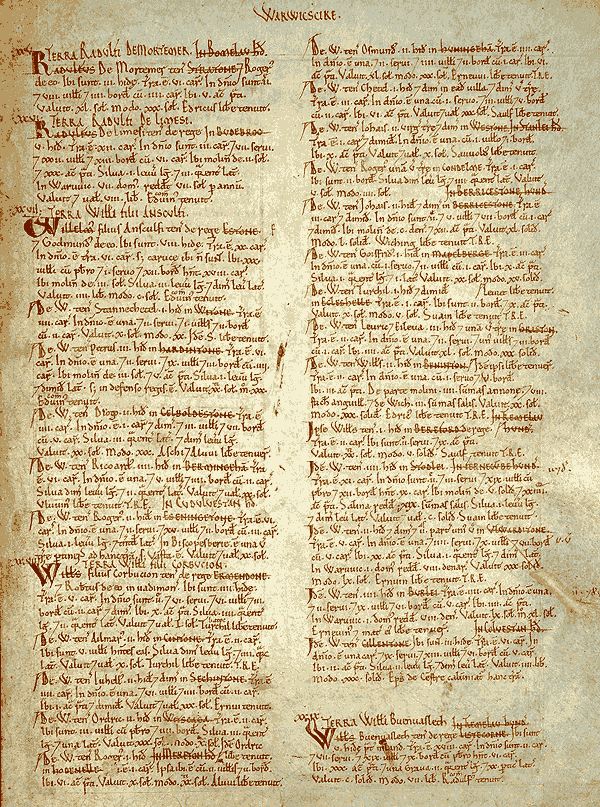Domesday Book
Associated with the reign of William the Conqueror, the Domesday book was created to provide the king with a means of maintaining control over Medieval England.
The Domesday book was created around 20 years after the Battle of Hastings, when William I demanded information about the ownership status of the country he was now ruling. He also wanted to discover how much tax he was owed and knew a written record would prevent tax disputes.
The Saxon Chronicle argues that the order for the English survey came in 1085, while other sources argue it was 1086. In either case, it took less than 12 months for the survey to be completed and the books are now held in the Public Records office.
While celebrated as an achievement by William and his supporters, the Domesday book struck doom and gloom into the hearts of England’s population, which led to its infamous title. Containing a final judgement on each person and the amount they owed the king, it was considered to be similar to the bible’s Judgement Day, when it was believed souls would either be judged fit for heaven or right for hell.

Thorough and concise, the Domesday book now provides historians with a detailed record of the state of the country during the mid-1080s. Questions ranged from the number of villagers in each village, the number of freemen and slaves living in each manor, the amount of woodland and pasture in each estate and even the number of ploughs owned by each landowner.
Each question was included with the aim of finding out how much tax was owed to the king by each area of land or manor. Additionally, William gained other important information such as who owned each section of land and how much it had cost the owner. The Domesday book also includes information about the value of the land, both before and after the Norman conquest.
Norman officials carrying out the survey took their job extremely seriously. On each manor visit owners would be questioned, followed by a type of farm manager known as the reeve and up to six peasants. Should it be established that any of the information given was untrue, the officials would unfairly punish those who had provided it.
The Domesday book has provided historians with a firm idea of what life was like in the mid-1080s, particularly in the areas worst hit by the Norman invasion. It is noted that Sussex, for example, had been badly attacked in the areas surrounding Hastings. In fact, 15 manors in the area had been declared waste or waste land by the officials sent to collect information, giving us an insight into the impact of the Norman invasion in this area.
Overall 13,418 areas were visited by the officials, although some major cities including Winchester were not mentioned. It was a monk who produced the last record in Winchester.
As a result of the Domesday survey each person was requested to pay taxes to the king, which prevented any other nobleman being in the position to challenge the king with their own army. Meanwhile, William was continually gaining the money he needed to make his own army larger and stronger.
William the Conqueror died in 1087 before he could see the benefits of his efforts, but his successor William II did reap the rewards. Like no king before him, William II had access to vast knowledge of his kingdom, including taxes owed and the names of any noblemen whose wealth made them a possible threat to his position on the throne.
See also: Sussex and the Domesday Book
MLA Citation/Reference
"Domesday Book". HistoryLearning.com. 2026. Web.
